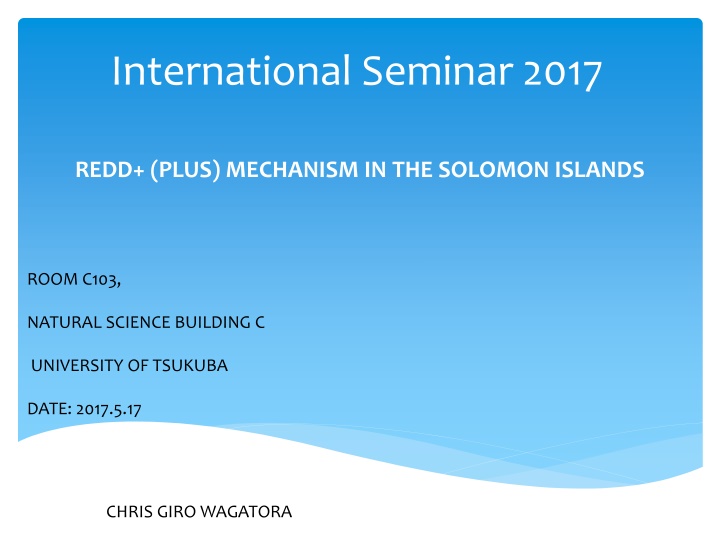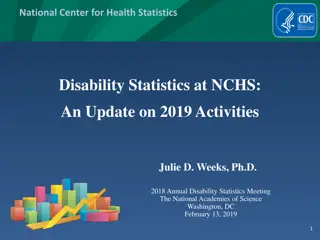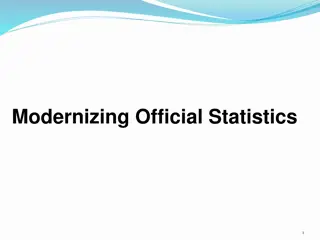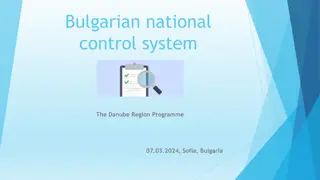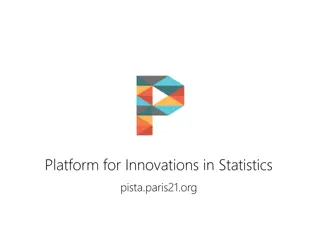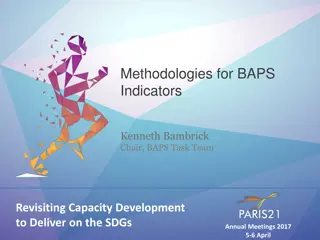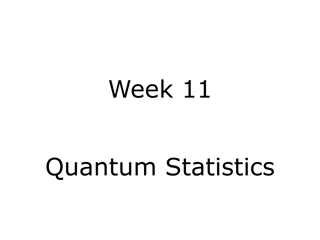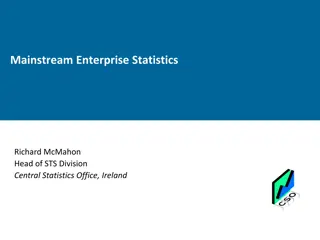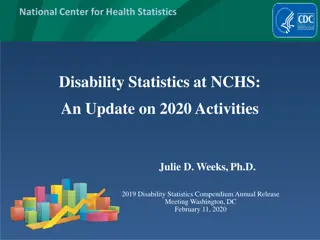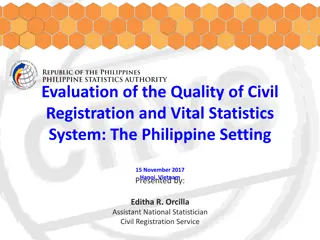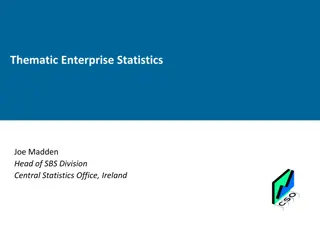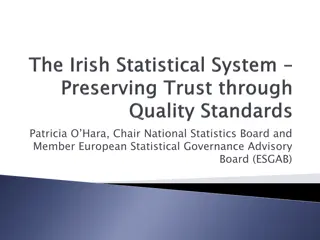NSDS 1.0 Approach in National Statistics System Management
NSDS 1.0 involves providing advice and engagement in various countries, promoting stronger ownership of statistics, linking statistics to national development strategies, and advocating for political support. The approach focuses on the entire national statistical system, improved coordination, institutional strengthening, and stakeholder recognition of statistical importance for evidence-based decision making.
Download Presentation

Please find below an Image/Link to download the presentation.
The content on the website is provided AS IS for your information and personal use only. It may not be sold, licensed, or shared on other websites without obtaining consent from the author.If you encounter any issues during the download, it is possible that the publisher has removed the file from their server.
You are allowed to download the files provided on this website for personal or commercial use, subject to the condition that they are used lawfully. All files are the property of their respective owners.
The content on the website is provided AS IS for your information and personal use only. It may not be sold, licensed, or shared on other websites without obtaining consent from the author.
E N D
Presentation Transcript
International Seminar 2017 REDD+ (PLUS) MECHANISM IN THE SOLOMON ISLANDS ROOM C103, NATURAL SCIENCE BUILDING C UNIVERSITY OF TSUKUBA DATE: 2017.5.17 CHRIS GIRO WAGATORA
PRESENTATION OUTLINE 1. 2. 3. 4. What is REDD+? 5. Phases of REDD+ 6. UNFCCC - International Guidance on REDD+: Cancun Agreements (Decision 1/CP.16) 7. REDD+ Readiness in the Solomon Islands 8. Background 9. REDD+ Vision 10. Institutional Arrangement 11. Where we are now Solomon Islands 12. REDD+ Programs & Activities 13. Challenges Introduction Origin and Evolution of REDD+ under the UNFCCC Why is REDD+ (Plus)?
Introduction Growing concern about environmental issues during 1980s 1992: Rio Earth Summit in Brazil: International United Nations conference Three conventions emerged to address environmental issues: United Nations Convention on Biological Diversity (UNCBD) United Nations Convention on Combating Desertification (UNCCD) United Nations Framework Convention on Climate Change (UNFCCC) UNFCCC: aimed to bring countries together to limit the impacts of climate change (by lowering human emissions) and adapt to the projected impacts (climate change adaptation, e.g. sea level rises)
Origin and Evolution of REDD+ under the UNFCCC 2005: 11th UNFCCC Conference of the Parties (COP) in Montreal: Papua New Guinea and Costa Rica introduced the idea of reducing emissions from deforestation - leads to two years of consultation period 2007: 13th COP in Bali: Introduced the idea of developing countries undertaking climate change mitigation activities Introduction of REDD+ in the Bali Action Plan 2009: 15th COP in Copenhagen: Technical methodological guidance Decision 4/CP.15 2010: 16th COP in Cancun Wide-ranging REDD+ guidance adopted Decision 1/CP.16 2013: 19th COP in Warsaw: Warsaw Framework for REDD+: The most comprehensive package of decisions to date on REDD+ - totaling seven decisions which almost completes UNFCCC COP guidance on REDD+ 2015: 21st COP in Paris: The Paris Agreement adopted wherein REDD+ recognized under Article 5: This now means that Parties can proceed to implement REDD+ activities in line with the previous COP Decisions as highlighted above
Why is REDD+ (Plus)? The Intergovernmental Panel on Climate Change (IPCC) recognised the contribution of emissions from the forestry sector in developing countries to climate change Research showed that reducing emissions from the forest sector was an opportunity to reduce emissions and increase removals cost- effectively (IPCC, 4AR) This lead to address the forest sector in developing countries as a means to mitigate climate change, informally known as REDD+
What is REDD+ (Plus)? Five activities are eligible under the REDD+ in developing countries (para. 70 Decision 1/CP.16): a) Reducing emissions from deforestation b) Reducing emissions from forest degradation c) Conservation of forest carbon stocks d) Sustainable management of forests e) Enhancement of forest carbon stocks REDD + Countries can focus on activity/ies most relevant to their national circumstances National level (sub-national only as a temporary measure) Voluntary participation by developing countries only
Phases of REDD+ Phase III - Positive incentives for verified performance Phase II - Implementation of national policies and action plans, demonstration activities Phase I - Capacity building - Design of National Plans, policies & measures READINESS Choice of REDD+ activities will depend on national circumstances circumstances Demonstration activities Demonstration activities must be results results- -based based they have to result in positive outcomes The mitigation performance of REDD+ has to be measured and reported by the country, and verified national
UNFCCC International Guidance On REDD+: Cancun Agreements (Decision 1/CP.16) REDD+ activities will be implemented through policy approaches & positive incentives REDD+ should be implemented in three phases Countries that want to participate should develop the following elements: A national strategy or action plan A benefit sharing mechanism A national forest monitoring system (NFMS) A safeguards information system (seven REDD+ safeguards) under Cancun agreements) To ensure protection against negative impacts and strengthen multiple benefits, gender, rights of indigenous people, environmental protection. Forest reference emission levels and forest reference levels RELs/RLs (performance benchmarks National Multipurpose Forest Inventory) Countries should address: drivers of D&D, land tenure issues, forest governance issues, gender considerations and REDD+ safeguards
REDD+ Readiness in the Solomon Islands Background Information Comprised of almost 1000 Islands Total Land Area: 28,000km square 90% of Land Covered by Forest (tropical rainforest) 87% of land is under customary owned, 9% is owned by the government 4% private land Population in 2015: About 642,000 80% of the Population lived in rural areas and depend extensively in subsistence farming Average Annual Temperature: between 25 C 30 C Average Annual rainfall: between 2,000mm 5,000mm
REDD+ Vision Solomon Islands Establish a sustainably managed forest sector that supports rural livelihoods, maintains the quality of the environment, contributes to the socio-economic development of the nation and, through reducing levels of emissions from the forest sector contribute towards global actions to mitigate climate change .
Where we are now Solomon Islands The next steps and process Cabinet approved and endorsed REDD+ Readiness Roadmap and Guidelines Review and Prioritized the REDD+ Roadmap activities. Roadmap Implementation
REDD+ Programs & Activities Support (Funding) Programs REDD+ Policy Development MoFR National Biomass Survey and Carbon Inventory 2016 - Piloting MoFR/Integrating global environment commitments in investment and development decision-making (IGECIDM - GEF) MoFR/MECDM/ IGECIDM - GEF REDD+ Awareness & Consultations Capacity Development towards NFI implementation MoFR/MECDM/IGECIDM - GEF Development of safeguard Framework Strengthened EIA guidelines (Agriculture/Forestry) Strengthened Organizational REDD+ implementation unit (Recruited new Officers) Formally established National REDD+ committee and focal Points. MECDM/MoFR/IGECIDM GEF IGECIDM GEF IGECIDM UNDP IGECIDM - GEF
Challenges New Concept or idea currently Solomon islands yet to benefit from REDD+ Long term investment before financial return or benefit Driven by resource owners in order to be succeeded Performance based result payment Challenges of land rights, timber rights and carbon rights how will these be reconciled Capacity Building towards REDD+
THANK YOU VERY MUCH!!! TAGIO TUMAS!!! ARIGATOU GOZAIMAS!!!
